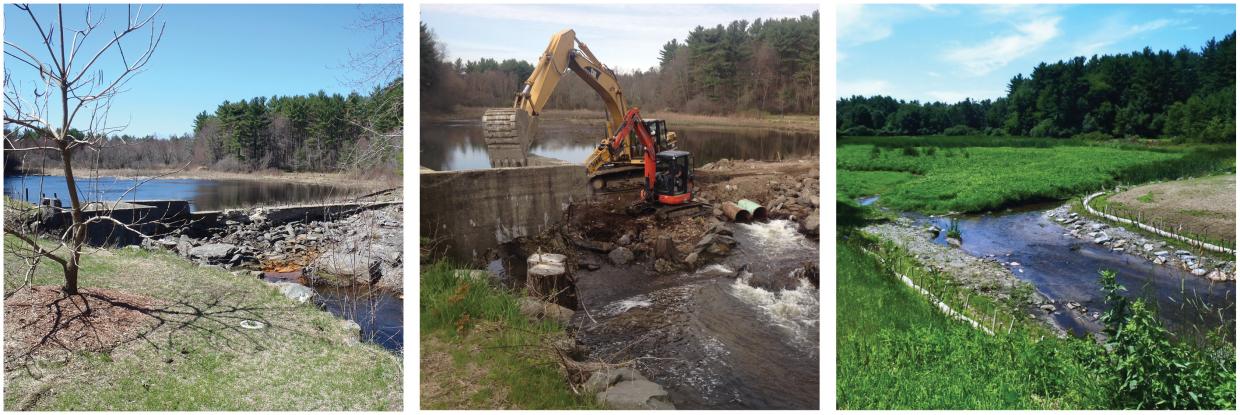In June 2014, the Town of Lancaster removed the Bartlett Pond Dam and completed site improvements to the surrounding Robert Frommer Conservation Area. The dam was located near the mouth of Wekepeke Brook, a cold water stream with native brook trout, rare species habitat, and exemplary natural communities. The dam raised water temperatures and lowered dissolved oxygen in the impoundment and limited access to cold water habitat for native brook trout. The dam was in poor condition and posed a risk to Route 117 downstream. Project goals included (1) restoring habitat connectivity, (2) improving water quality, and (3) eliminating risks and liabilities associated with the aging dam.
Benefits of Removal
Dam removal helps fish and wildlife survive climate change by expanding the amount, quality, and diversity of habitat available. Removal of the Bartlett Pond Dam opened 18 miles of mainstem and tributary habitat. Fish and other aquatic species are now able to access coldwater refugia during the warm summer months and seek quieter streams during mainstem floods. Trout were found by MassWildlife biologists in the new channel above the dam a few weeks after the dam was removed.
The deteriorated dam presented risk to the Route 117 bridge downstream. The dam was classified as a small-sized, Poor condition, and Significant Hazard structure by the MA Office of Dam Safety. Dam removal reduced risk and Town liability, improved ecological conditions, and helped the community adapt and be more resilient to climate change and extreme weather.
Project Costs & Funding
The cost to remove the dam was approximately $100,000 compared with an estimate of $600,000 - $1,000,000 to repair or replace the dam. The Town of Lancaster funded the project through a loan provided by the Massachusetts Executive Office of Energy and Environmental Affairs (EEA) Dam and Seawall Repair or Removal Fund. The Massachusetts Division of Ecological Restoration (DER) contributed $45,000 in cash and technical assistance throughout the project.
Project Partners
The project was led by the Town of Lancaster, with assistance from DER and MassWildlife, and support from the Nashua River Watershed Association, Lancaster Friends of the Nashua River, and others. PARE Corporation was the project engineer and Kaszowski Brothers was the construction contractor.
